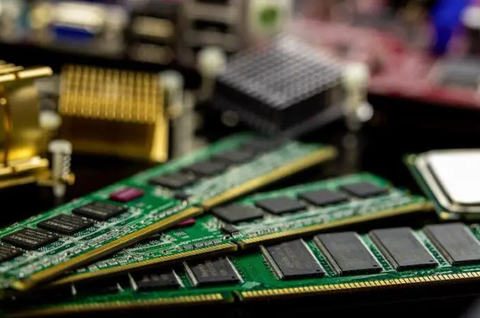DDR4 vs. DDR5: Exploring the Next Generation of RAM

In the ever-evolving world of computer hardware, RAM (Random Access Memory) plays a crucial role in determining a system's performance and speed. DDR (Double Data Rate) RAM has been the go-to choice for many years, and DDR4 has been widely adopted by consumers and businesses alike. However, the latest advancement in RAM technology, DDR5, promises significant improvements over its predecessor. In this article, we'll explore the key differences between DDR4 and DDR5, shedding light on the exciting features and benefits that DDR5 brings to the table.
- Speed and Bandwidth: One of the most noticeable differences between DDR4 and DDR5 is their speed and bandwidth capabilities. DDR4 RAM typically operates at speeds ranging from 2133 MHz to 3600 MHz, while DDR5 RAM starts at 4800 MHz and can reach even higher frequencies. This substantial increase in speed allows DDR5 to handle data at a much faster rate, resulting in improved system responsiveness and overall performance. DDR5 also brings significant enhancements to bandwidth, which refers to the amount of data that can be transferred per unit of time. DDR4 RAM typically offers bandwidths ranging from 17 GB/s to 25 GB/s, while DDR5 boasts impressive bandwidths ranging from 32 GB/s to a staggering 64 GB/s. The increased bandwidth allows for faster data transfer between the RAM and other components, reducing potential bottlenecks and enhancing overall system efficiency.

-
Power Efficiency: DDR5 RAM introduces notable improvements in power efficiency compared to DDR4. By adopting a more advanced voltage regulator module (VRM) design, DDR5 RAM can operate at lower voltages while still delivering high performance. This reduction in voltage requirements leads to lower power consumption, resulting in improved energy efficiency and reduced heat generation.

-
Increased Capacity: DDR5 RAM offers higher memory capacity compared to DDR4, allowing for greater data storage and processing capabilities. While DDR4 modules commonly range from 4GB to 128GB, DDR5 RAM is expected to support capacities up to 128GB per module and potentially go even higher in the future. This expanded capacity is particularly beneficial for memory-intensive applications like video editing, 3D rendering, and data analysis, where large amounts of data need to be processed simultaneously.

-
Error Correction and Reliability: DDR5 RAM introduces an advanced error correction mechanism known as ECC (Error-Correcting Code). ECC allows the RAM to automatically detect and correct single-bit errors, reducing the likelihood of system crashes and data corruption. While DDR4 RAM also supports ECC, it is not as widespread as in DDR5 modules. The improved error correction capabilities of DDR5 provide enhanced reliability, making it a preferred choice for mission-critical systems and server environments.

-
Backward Compatibility and Future-proofing: DDR5 is not directly compatible with DDR4 slots due to changes in pin configuration and power requirements. However, as with previous RAM generations, motherboard manufacturers are likely to release new motherboards that support DDR5 modules. It is important to note that DDR5 RAM cannot be used in DDR4 slots and vice versa. Therefore, if you plan to upgrade to DDR5, you will also need to invest in a compatible motherboard.

Looking Ahead: DDR5 RAM represents a significant leap in memory technology, offering faster speeds, higher capacities, improved power efficiency, and enhanced error correction capabilities compared to DDR4. However, it's important to note that the adoption of DDR5 will take time, and initially, it may be more expensive and less readily available than DDR4. For everyday users, DDR4 will continue to provide reliable performance, while DDR5 is poised to cater to professionals and enthusiasts seeking the cutting-edge advantages it brings.
Once you have decided on the type of RAM you want included in your next build with us, contact us to get started today!
